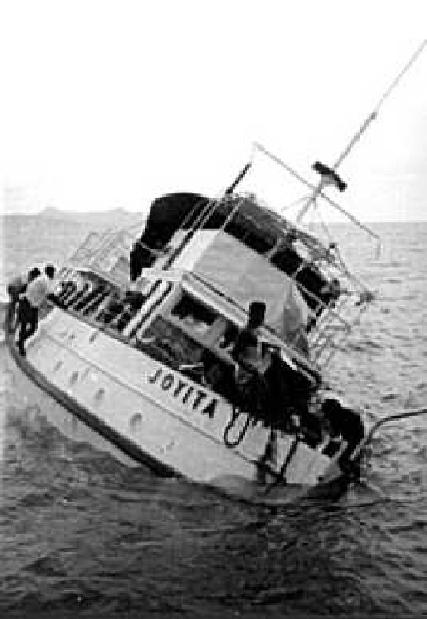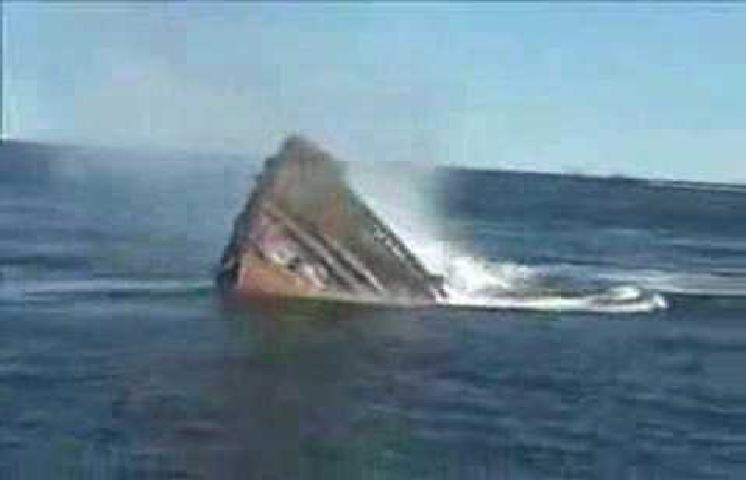
The very mention of the world crankcase explosion, specifically in context of the huge marine propulsion engines, brings to our minds a scenario which is not much different from the scenario associated with 9/11 and there is a reason for that. On 9/11 the unfortunate and barbaric explosions occurred in the huge twin towers, and in 9/11 (1947) one of the biggest explosions occurred on a ship named Reina Del Pacifico in which 28 precious lives were lost.
Causes of Crankcase Explosion?
It refers to a condition where the crankcase of an engine catches fire due to any reason and since the marine engines are huge structures, the amount of damage that could possibly result from such a crankcase explosion could be well imagined.
First let us try and understand the causes of crankcase explosion. Starting from the very basics, the cause of explosion and fire is nearly the same irrespective of the type of fire or explosion. There are three elements that need to be a part of an explosion and they are
- Heat
- Oxygen
- Fuel
Wherever all these elements combine in the right proportion, a fire or explosion is most likely to occur, so let us see how this happens in case of a crankcase in a marine engine. We know that lubricating oil is circulating constantly across the moving parts within the crankcase and these oil particles are getting splashed around all the time and the temperature inside the crankcase is also high. Yet these conditions are not sufficient to cause any explosion or fire since the oil particle size is not that small so as to get burnt easily and moreover the temperature even if high is not sufficient to ignite these particles.

So when everything is going smoothly where does the crankcase explosion occur? There could be more than one reason for the crankcase explosion yet one of the most common reasons is the formation of a localized hot spot somewhere within the crankcase due to any failure or mechanical fault. The temperature at this localized hot spot is sufficiently more than the surrounding temperature and when these oil particles fall on this region, they get vaporized. It requires a temperature of nearly 200C+ for this to happen
Once vapourized these particles get transformed into white mist which consists of particles which are typically of the order five to ten microns and they start to float around in the crankcase along with the air already present. It requires their ratio with respect to air to be about 13% by volume at which the lower inflammable limit starts.
Once these conditions are reached and when the temperature of the hot spot keeps rising and reaches to about 850C it is then that the probability of occurrence of a fire is extremely high. Once the fire starts, the crankcase explosion occurs and the severity of this could be pretty high. The intensity of the explosion will depend on the amount of mist that that is produced in the crankcase. These explosions will generally be one or two in number.
The first explosion is generally inside the crankcase and it can lift the valves of the crankcase. The first explosion gives rise to a shock wave. This shock wave and explosion can create a shock wave that can further reduce the size of the oil droplets. After this explosion the pressure reduces as a result more air goes into the crankcase. This increased supply of air and fuel gives way to the second explosion which is generally worse than the first one.
Methods To Check Crankcase Explosion
The first method that you can implement to control a crankcase explosion is by using an oil mist detector. As the name itself suggests this detector takes samples from the main engine and checks the samples for concentration of mists. Some engines are also fitted with alarms so that if the detector notices high mist the alarm is set on. These alarms are also fitted to the engines so that as soon as the alarm goes on the engine slows down automatically. These automatically prevent crankcase explosion.
Of course it must be stated that even with automatic slow down it is not entirely safe as explosion could occur during the slow down process also. Hence research is being done to find out alternatives to this as well. One of the researches is based on the inclusion of water mist along with oil mist in the right quantity whenever the danger of explosion is there. This is being tried out by MAN B&W.
The other safety mechanism used to control crankcase explosion in a ship is called the crankcase relief doors. These instruments ensure that if there is an increase of pressure inside the crankcase then the spring loaded valves are lifted automatically. When the pressure stabilizes these get back to the original position. This mechanism basically works to control the second explosion that may follow the first explosion. The second explosion maybe even worse this is exactly why the crankcase relief doors can be of great use.
History of Crankcase Explosions
Given below is a list of crankcase explosions (Courtesy MAN B&W) which list some of the prominent causes of these explosions over the years. Of course this is just an indicative list and not exhaustive by any means. Figures from Lloyds Register suggest that there are nearly 65 reported cases of crankcase explosions of varying intensity each year and the number of unreported incidents could be even more








